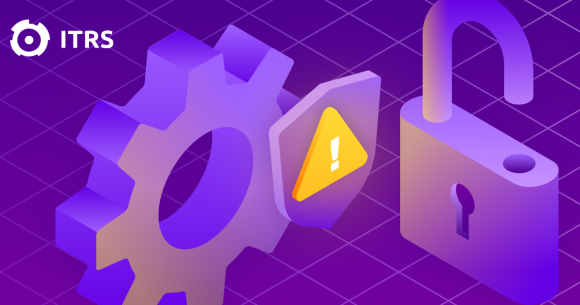Why the Nordics are winning in tech competitiveness
While the world has been gripped by an energy crisis, inflationary pressures and geopolitical tensions, the Nordic region has been quietly adopting new technology to help fight the odds.
From the original article in NY Teknikk by Sandro Coletti, Regional Sales Director for NEMEA at ITRS.
A technology-embracing mindset in the Nordics over the last six years has enabled Sweden, Denmark, Norway and Finland to retain top ten spots in IMD’s global digital competitiveness rankings.
From start-ups to fintech, digital natives in Scandinavia will be the differentiator between businesses that actively thrive over the coming months and those that struggle to even survive.
Optimizing operations
If Nordic countries are the leaders, what should the stragglers do to catch up? The first priority should be leveraging technology to ensure business operations are as resilient as possible. The reputational risks of unplanned downtime could be far-reaching and, during a period of economic uncertainty, the real-world financial implications of an avoidable outage are even greater.
A robust IT monitoring system that mitigates downtime, ensuring operations are always-on, can no longer be considered an additional or optional “nice-to-have.” As IT estates continue to grow more complex, an equally sophisticated monitoring tool is now vital to achieve the necessary end-to-end visibility across systems.
This is imperative for meeting rapidly evolving customer expectations. Pre-empting potential issues with real-time monitoring is standard practice across the industry and neglecting it is not a viable option for long-term business success.
Time and again, the consequences of insufficient monitoring capabilities are only taken seriously once it’s too late.
Cost efficiencies
Also, with profit margins narrowing, businesses need effective ways to save costs. While the cost of effective monitoring tools might be off-putting during a time of economic difficulty, now is the time to invest in new technologies – they will save money in the long-term.
If businesses can’t afford to prioritize resilience and observability then, ultimately, they won’t be able to afford being in business at all. For short-term opportunities to save costs while enhancing operations, businesses have limited but highly effective options.
The rise of cloud IT has been a significant step forward for businesses and - as is customary in the Nordics - uptake of this technology has been both prompt and widespread. Sweden, Finland and Denmark ranked in the top four in a recent index by MIT Technology Review measuring how well the technology in a country promotes the availability of cloud services.
By contrast, the UK, which is considered to have strong adoption of cloud technology, did not even make the top ten. However, the speed at which Nordic companies have adopted new cloud technology has meant that many organizations have not always considered a tailored approach that suits their specific business needs.
And while cloud technology has been hailed as a silver bullet solution to all business problems, when used inefficiently, firms might see their costs dramatically rise. In most cases, unexpected costs arise from over-sizing to avoid running out of capacity. But this is unnecessarily wasteful in the cloud. There is therefore a massive opportunity for businesses to reassess their cloud strategies to maximize cost-effectiveness.
Technology for a sustainable future
Aside from the reputational and cost-saving opportunities of adopting a digital-first mindset, there are significant implications for a more sustainable future. The global drive towards greater sustainability-led practices has catalyzed businesses into action, innovating new technologies that serve a greener purpose.
Digitally native firms have been the first to recognize the opportunity technology poses in driving a sustainable transition. Businesses that have already started taking sustainability seriously now have an advantage over their competitors.
Cyber concerns
The drive towards greater sustainability is not the only trend gaining momentum: Increasingly sophisticated cyber threats have become the greatest risk to businesses. During a period of enormous recessionary pressure, the temptation might be to cut back on investment in certain preventative technologies, but this would be a serious misjudgment.
Now more than ever, amid extreme geopolitical hostility, firms must understand exactly where their vulnerabilities are and act accordingly. The cost of a cyberattack could prove fatal for a business that fails to act quickly. In the long run, investment in technologies that ensure businesses can effectively mitigate and protect against a worst-case cyber scenario is crucial.
Continuing to embrace new innovations in technology must be the first step, particularly when it comes to optimizing operations – whether it’s in the transition towards a sustainable future, the mitigation of cyber threats, or the effective monitoring of your IT estate.
You can see the original article in NY Teknikk.
And click below to learn how ITRS can help you think like a Scandi.




